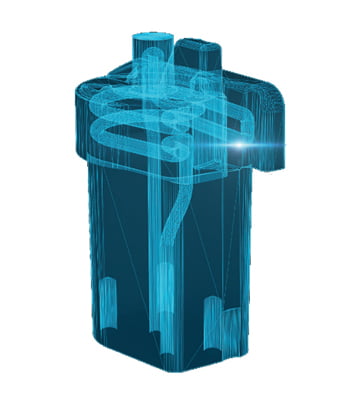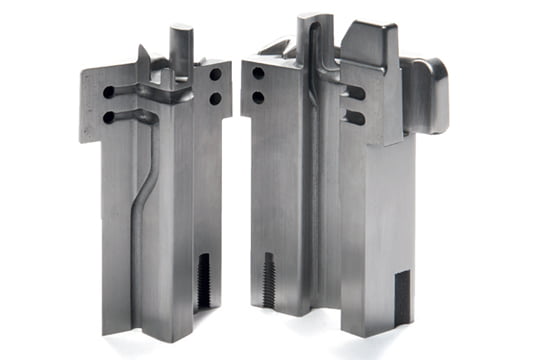Low-Pressure Casting

Pressure casting is a name given to metal casting processes using metal molds or gravity molds. There are many different processes under a general name. The pressure casting process actually has three main sub-processes: Gravity (die) casting, low pressure casting, and high pressure casting. There are also names such as low pressure casting, high pressure casting, aluminum injection. It uses metal molds to make casting, but the molten metal is pressurized to make the mold fill faster and have better control. The process uses up to 7 MPa pressure for special products, but typically the pressure used is below 0.5 MPa. The term Pressure Casting is used to describe processes that use metal molds or molds to produce parts from various metals. These processes include gravity casting in which liquid metal is poured into the mold; low pressure casting, where the metal is forced into the mold by air pressure; and high pressure casting where a hydraulic ram is used to inject molten metal into the mold at extremely high pressures. Generally, the pressure casting process provides a great deal of flexibility for the production of metal components. Low pressure die casting, parts can be produced from almost any metal in almost any shape. In the case of very high volume parts, high pressure casting provides high production speeds and good dimensional repeatability.
It is preferred in many sectors such as automotive, electrical and electronics, and white goods.
Contact Us for Your Offer Requests and Questions!

With 3D additive manufacturing, it is possible to produce parts with complex geometry, internal structures and voids, and variable wall thicknesses. Businesses use 3D printing to quickly produce die casting models to be produced. The advantage of producing metal casting molds with 3D printing technology is freedom of design, no need for molds, no extra labor and no time costs.
Pressure casting machines manufacturer Oskar Frech GmbH & Co. KG started dealing with industrial 3D printing more than ten years ago and has been running its own SLM facility for two years. Dr. Waldemar Sokolowski, Product Manager for product and business segment planning at the company, says additive manufacturing production processes open up new possibilities for designing the increased performance and flexibility of pressure casting molds for processing non-ferrous metals. In addition to prototypes made of aluminum alloy, the facility provides design changes to the product development process thanks to the freedom of design, thus improving product quality, 50% more efficient production and 60% reduction in cooling time compared to conventional pressure molds.
Since mold production is an expensive and time-consuming operation, there are often limiting processes such as taking a longer time to market during the new product development process. When a mold or critical parts a mold need to be redesigned and replaced, development costs can increase significantly, along with unwanted time delays. Therefore, the cost and time savings that can result from the use of additive manufacturing technology to produce complex parts of a mold provide many convenience in the product development phase of metal additive manufacturing technology.
In terms of material usage diversity in metal additive manufacturing technology; tool-steel, Inconel, Titanium alloys and Aluminum alloys are used.




